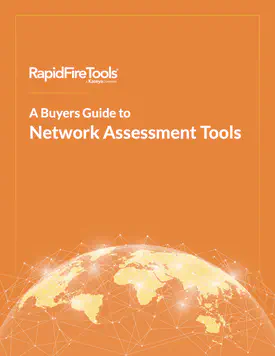When we send staff into the field, we often don’t get much feedback unless it’s a negative experience. When those complaints roll in, we get a pretty good idea of what’s gone wrong and can take steps to address it.
The rest of the time we usually hear nothing but crickets, except maybe an occasional compliment from a proactive customer. But assuming “no news is good news” isn’t the best way to assess their actual performance.
Filling the feedback funnel
If you want a more accurate and well-rounded evaluation of field tech performance, you’ll need to create additional channels and opportunities to collect feedback. Here are a few ways to prompt customers to give you a better sense of how things are going outside your office.
Follow-up courtesy calls
A quick call from the main office to check in with customers after a site visit is a great way to convey customer centricity while also gathering valuable feedback on the visit. The call shouldn’t be an interrogation, but rather a quick interaction with a few questions for the customer.
Examples of these questions could be:
- Were you satisfied with the experience?
- Do you have any remaining questions of issues?
- Is there anything we could do to improve?
The benefits of asking these questions during this call is that the experience will still be fresh in the customer’s mind and – unlike a formal survey or interview – they won’t overthink their responses.
Surveys
Online surveys are a cheap and easy way to solicit customer feedback. They can be sent to all customers at once or distributed after specific field service visits.
It’s vital that each survey response can be tied back to a particular service call, otherwise there’s no way to know exactly which tech experience they’re referring to. There should be a mix of yes/no, multiple choice and open-ended questions to get as broad a set of feedback as possible (since different people are more or less comfortable offering it up).
Whenever possible, stay away from questions that provide vague responses – if it’s not specific and actionable it won’t be very useful to the MSP. Questions about the tech’s knowledge, professionalism and communication are good areas to focus on.
If you have a standard playbook that field techs should be following on a service call, be sure to ask questions that verify if they’re doing so. Otherwise it’s hard to know if they’re just checking boxes or actually performing each step.
End every interaction with a question
Your MSP can create a culture of customer feedback by continually asking for it. By ending every interaction with open-ended questions soliciting input, there’s a better chance you’ll receive some useful nuggets more often.
Measuring efficiency
Much of a field tech’s value is in their ability to complete tasks and solve issues as quickly as possible so they can move on to additional assignments. But given that field service work is a little more complicated than pizza delivery, speed isn’t the only measure that counts.
In addition to speediness, quality is just as important when it comes to efficiency. Not only do you want your field techs to get the job done, but you want it done right. The customer should be happy, and no return visits should be required (unless that was already the plan).
The techs that can complete lots of jobs and do them well are the most efficient. Speedy yet sloppy or slow but thorough aren’t nearly as desirable. Scoring should be based on time spent on tasks (versus benchmarked expectations), first-time fix rates, and whether follow-up customer support calls are logged.
Field service techs should be evaluated based on the promptness, thoroughness and accuracy of their site visit notes.
Leveraging ‘Big Brother’ tactics
Another dimension of evaluating a tech’s efficiency is tracking where they actually are. Use GPS to monitor field service tech locations to be sure they’re not taking unexpected detours or making unplanned stops along their routes.
To separate travel time from actual site work, MSPs can use workforce management tools that have techs “clock in” on a mobile application when they start a job and “clock out” when it’s finished. Cross-referenced with the type of task they’re deployed for, MSPs can get a true apples-to-apples comparison between different field techs.
Matching measurement to rewards
Regardless of which tactics MSPs use to evaluate field techs’ performance, the incentives available to those workers should be aligned to the KPIs being tracked. Whether it’s promotions, bonuses or raises, management and the workforce should be on the same page about what’s expected, what the MSP cares about, and how that can impact employees’ careers and compensation.
MSPs should also regularly share reporting on field service metrics with the team. Showing how the entire team is performing, how different segments are doing, and then privately sharing each individual’s performance data to give managers an opportunity to step in and techs a chance to step up.
Now that you’ve got a handle on evaluating your techs and maximizing their potential, you can turn your attention to retaining your client base. Building client loyalty is essential to growing a successful managed services practice, but most business clients aren’t engaged with their IT service providers. Click here to download our “MSP’s Quick-Start Guide to Building Client Loyalty” eBook.
